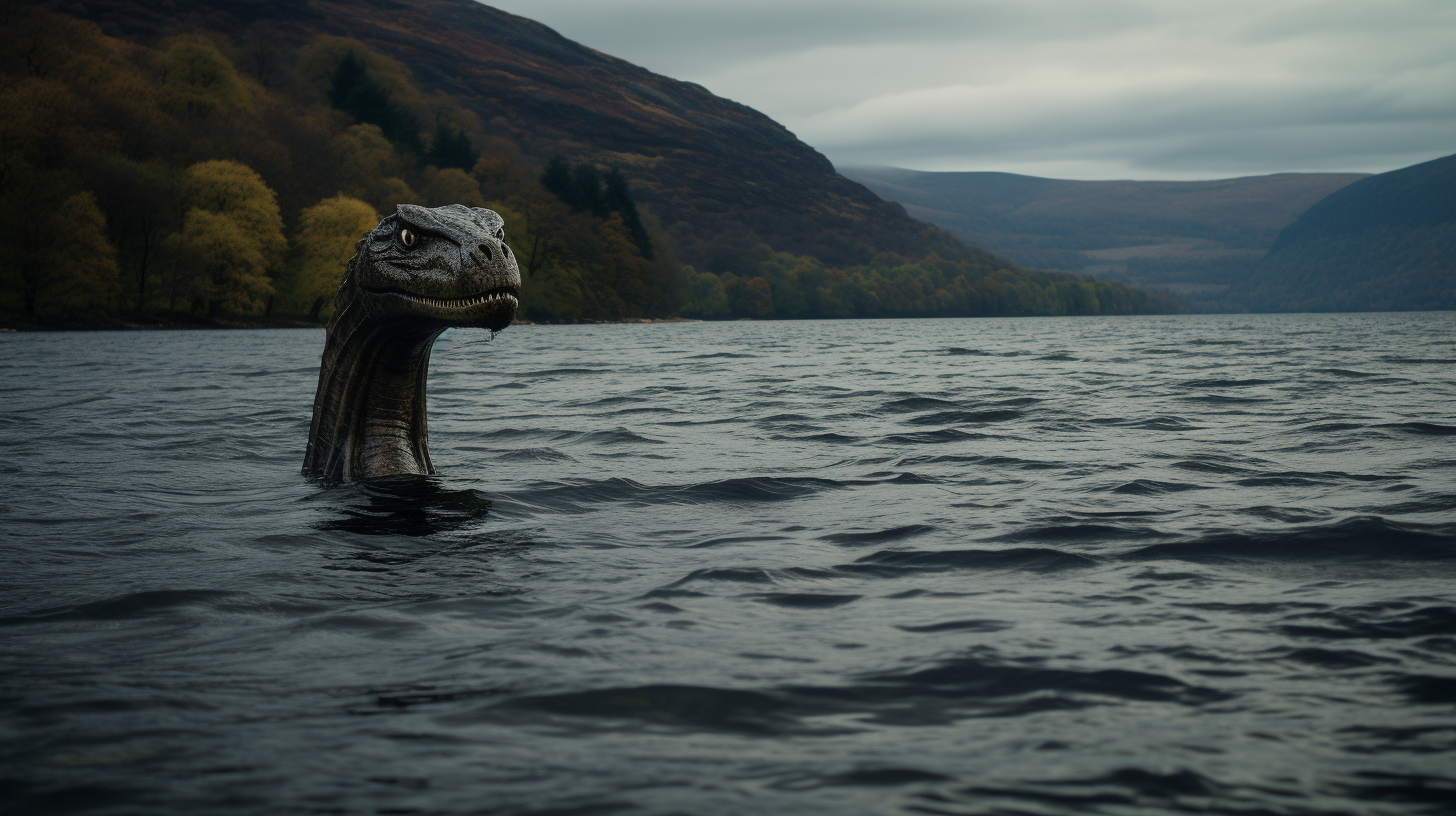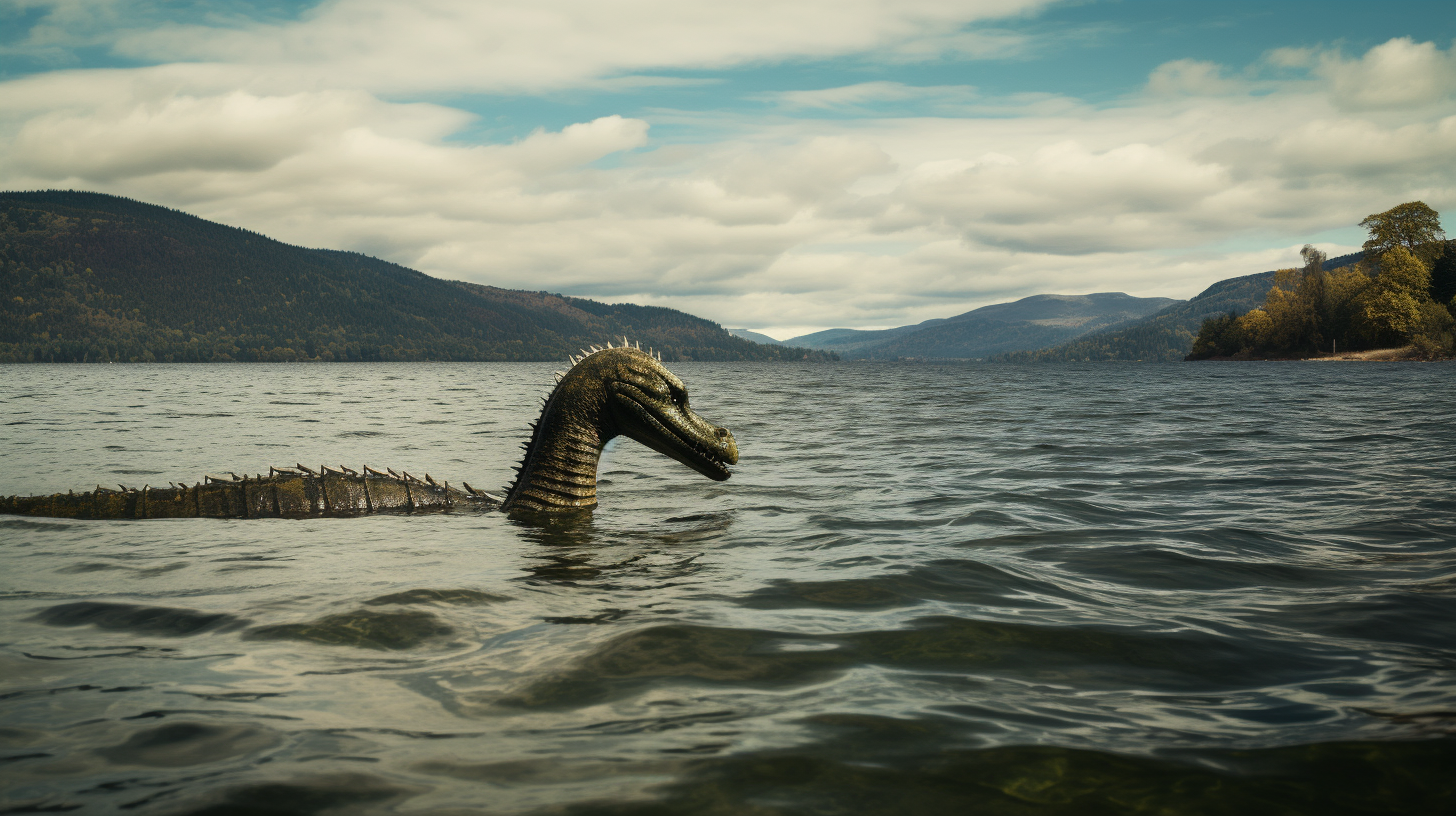Ever pondered the hidden secrets lurking beneath the calm surfaces of lakes worldwide? This piece delves profoundly into the alluring realm of lake monsters, from Loch Ness to Okanagan Lake in British Columbia, revealing the compelling evidence hinting at the probable reality of these elusive creatures.
Located in Scotland, Loch Ness is encased in enigma and fables, long intertwined with the mythical creature famously known as the Loch Ness Monster or Nessie.
Despite its ancient roots, the Nessie legend gained global fame in 1933 following the emergence of a photo purportedly capturing the creature. Subsequently, a plethora of eyewitness testimonies and persuasive photographic proof came to light, intensifying the intrigue surrounding this mystical entity.
A notable sighting occurred in December 2018 when military historian Ricky Phillips, strolling along the Loch Ness shores, witnessed an uncommon disturbance in the waters, capturing it in a photograph.
Capturing a graceful figure emerging from the lake’s depths, the image sparked discussions on the potential existence of Nessie.

Nevertheless, Loch Ness isn’t the sole backdrop for these narratives. An intriguing occurrence dubbed the “lake monster belt” encompasses multiple lakes globally, all positioned between 40 to 60 degrees north in the Northern Hemisphere.
This geographical correlation prompted researchers to hypothesize certain conditions within these latitudes that could support the plausibility of lake monster existence.
For instance, Lake Champlain harbors Champ, often likened to Nessie. Reports of Champ sightings trace back over a century, detailing encounters with a long, sinuous creature gliding through the lake’s waters.
Similarly, the enigmatic Ogopogo creature resides in Okanagan Lake, British Columbia.
This phenomenon extends beyond North America, with Russia hosting its rendition of a lake monster, the Lake Brosno creature, believed to inhabit Lake Brosno. Despite distinct appearances and local folklore, these entities share common traits – elongated, serpentine forms and a knack for evading capture.

One of the most captivating pieces of evidence concerning these creatures’ existence stems from recent sonar scans of Loch Ness, unveiling a substantial, unidentified entity moving beneath the lake’s surface at a depth of around 600 feet.
While skeptics may attribute it to a sunken log or debris, photography experts speculate it could be a living organism. The enigma deepens as the entity swiftly appeared and vanished, perplexing researchers.
Various theories have been posited by researchers to elucidate the existence of these lake monsters, ranging from mutated eels to primordial beings. Nonetheless, the enduring enigma lies in the consistent reports of analogous entities across diverse lakes worldwide.
The striking resemblances among these lakes, marked by their stretched shapes, narrow bodies of water, and specific geographic coordinates, pose fascinating inquiries about the conducive conditions that could bolster the existence of such creatures.
Video:
To conclude, the aura encircling lake monsters perseveres in captivating our imaginations. While definitively proving the existence of these enigmatic beings may elude us, the compelling evidence from myriad sightings, sonar scans, and the unusual geographic prevalence of akin creatures within the “lake monster belt” sustains the myth.
Whether one believes in these beings’ existence or regards them as products of folklore and human creativity, the world’s lakes endure as realms of mystery and fascination, beckoning further exploration and revelations.
